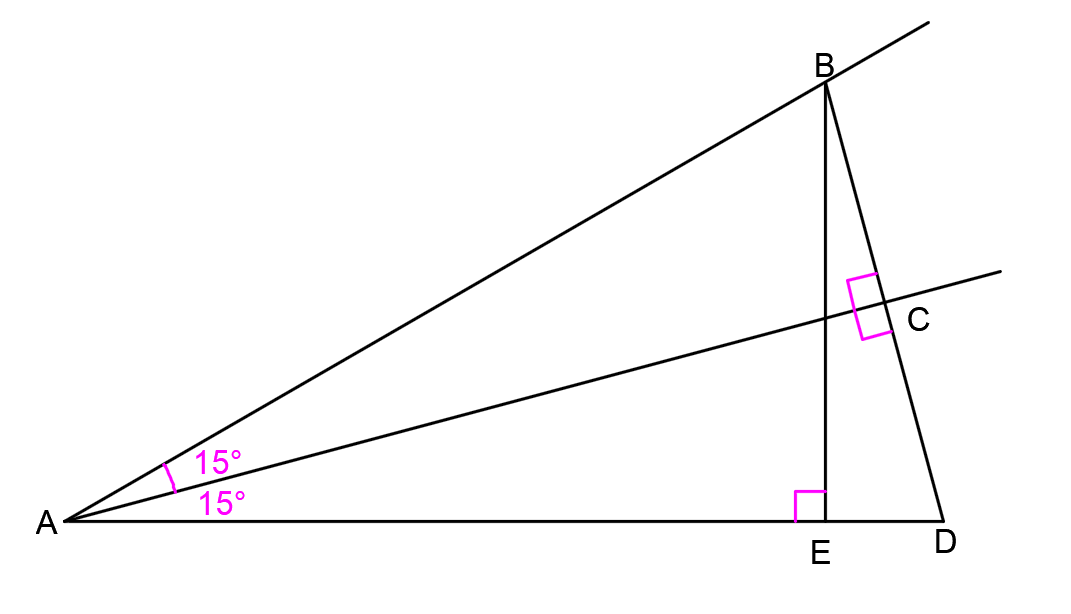Angles
- What is an Angle?
- Parts of Angles
- Types of Angles
- Solved Examples On Angles
- Practice Problems On Angles
- Frequently Asked Questions On Angles
Introduction:
In geometry, an angle is formed when two lines meet or intersect at a point. It is a fundamental concept used to measure the amount of rotation or separation between two lines or objects. Angles are widely used in various mathematical and scientific fields, as well as in everyday life. This article provides a detailed overview of angles, including their definition, parts, types, solved examples, practice problems, and frequently asked questions.
Definition:
An angle is defined as the figure or space formed by two rays or lines that share a common endpoint, known as the vertex. The rays are called the sides of the angle. The size or measure of an angle is expressed in degrees (°), radians, or other angular units.

Parts of Angles:
An angle is made up of three main parts:
- Vertex: The common endpoint where the two rays or lines meet is called the vertex of the angle.
- Sides: The two rays or lines that form the angle are known as its sides.
- Interior: The region or space enclosed by the angle is called its interior.
Types of Angles:
Angles can be classified into various types based on their measures or properties. Some common types of angles include:
Acute Angle: An acute angle is any angle that measures less than 90°. It is smaller than a right angle.
Right Angle: A right angle is exactly 90°. It forms a perfect L-shape.
Obtuse Angle: An obtuse angle is any angle that measures greater than 90° but less than 180°. It is larger than a right angle.
Straight Angle: A straight angle is exactly 180°. It forms a straight line.
Reflex Angle: A reflex angle is any angle that measures greater than 180° but less than 360°. It is larger than a straight angle.
Complementary Angles: Complementary angles are two angles that add up to 90°. Each angle is called the complement of the other.
Supplementary Angles: Supplementary angles are two angles that add up to 180°. Each angle is called the supplement of the other.
Adjacent Angles: Adjacent angles are two angles that share a common vertex and a common side.
Vertical Angles: Vertical angles are a pair of angles formed by two intersecting lines. They are opposite each other and share the same vertex. Vertical angles have equal measures.
Corresponding Angles: Corresponding angles are formed when a transversal intersects two parallel lines. They are located on the same side of the transversal and in corresponding positions. Corresponding angles have equal measures.
Solved Examples On Angles:
Example 1: Find the measure of angle A in the given figure.
*-------------*
| |
| A |
| |
*-------------*Solution: Since angle A is a straight angle, it measures 180°.
Example 2: Find the complement of an angle that measures 40°.
Solution: The complement of an angle is 90° minus the angle's measure. Therefore, the complement of an angle measuring 40° is 90° - 40° = 50°.
Example 3: In a triangle ABC, angle A measures 60° and angle B measures 45°. Find the measure of angle C.
Solution: In a triangle, the sum of all angles is 180°. Therefore, angle C can be found by subtracting angles A and B from 180°. Angle C = 180° - 60° - 45° = 75°.
Practice Problems On Angles:
- Find the measure of the complement of an angle measuring 25°.
- Determine the type of angle formed when two lines are perpendicular to each other.
- In a quadrilateral, the measure of three angles is given as 40°, 55°, and 80°. Find the measure of the fourth angle.
- Find the sum of all interior angles of a hexagon.
- If angle A is 30°, what is the measure of its supplementary angle?
Frequently Asked Questions On Angles:
Q1. What is the smallest possible angle?
A1. The smallest possible angle is an angle that measures 0°. It is known as a zero angle.
Q2. Can an angle have more than 360°?
A2. No, an angle cannot have more than 360°. A full rotation corresponds to 360°, so any angle larger than that would be equivalent to multiple rotations.
Q3. What is an angle bisector?
A3. An angle bisector is a line or ray that divides an angle into two congruent or equal parts. It passes through the vertex of the angle.
Q4. How do you measure an angle?
A4. Angles are typically measured using a protractor. The protractor is placed on the vertex of the angle, and the scale on the protractor is aligned with one side of the angle. The measure is read from the scale where the other side of the angle intersects it.
Q5. What are coterminal angles?
A5. Coterminal angles are angles that have the same initial and terminal sides, but can differ in their measures. Two angles are coterminal if their difference is a multiple of 360°.
Conclusion:
Angles are fundamental geometric concepts used to measure the rotation or separation between two lines or objects. They are classified into various types based on their measures or properties. Understanding angles and their properties is essential in numerous mathematical and scientific applications. This article provided a comprehensive overview of angles, including their definition, parts, types, solved examples, practice problems, and frequently asked questions. By mastering the concept of angles, individuals can enhance their overall understanding of geometry and its practical applications.